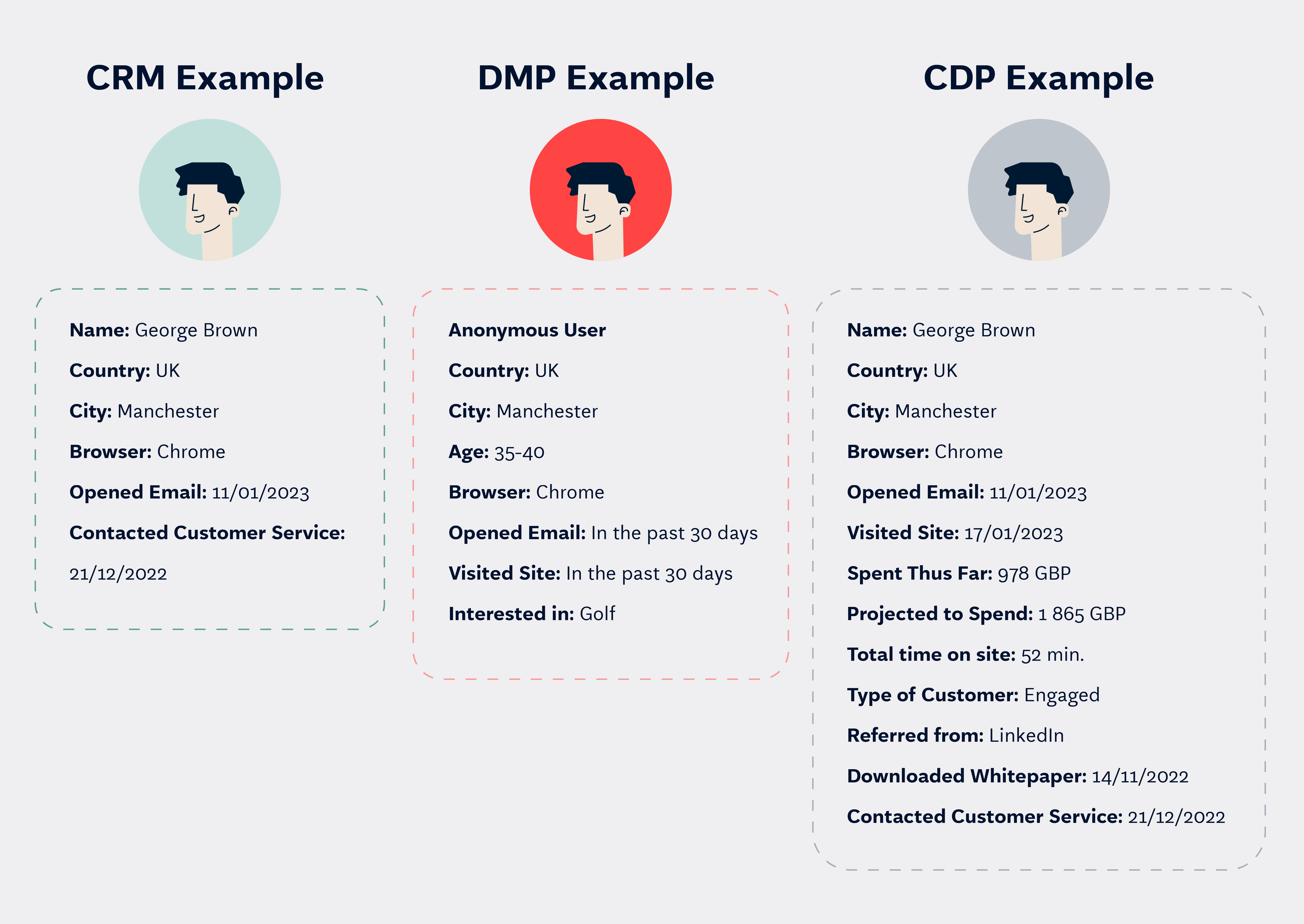You can't be a CMO without knowing what a CDP is
March 14, 2023 / 4 min read

Photo by CHUTTERSNAP on Unsplash
Customer data platforms are no longer a technology only for the largest and most innovative companies. These platforms are becoming a standardised part of the technology that marketers use, and you must, therefore, decide whether this is suitable for your company or not to use CDPs.
Something that makes the work with data-driven marketing difficult is that the data is scattered across different systems that do not communicate well. A Customer Data Platform (CDP) provides consistent data from the web and other data sources and makes this data available for real-time, data-driven, personalised customer experiences.
The transition to customer data platforms is often compared to the transition from hard-coded websites to CMSs (that's what happened approx. 15 years ago). Many experts expect CDPs to become a standardised part of web architecture soon, and the companies that sell the solutions report solid growth. CDPs are in the early growth phase.
Now is the time to take a stand on whether you should have a customer data platform or not. And if the answer is "yes", you must consider the type of solution and how it should be set up to provide maximum value.
CDP vs DMP vs CRM
Customer Data is not a new thing; it has been around for some time now. What's new with a CDP is its ability to easily collect a wide scope of data and make it available for data-driven and personalised use cases across all digital touchpoints. Data collected in a CDP overlaps with both CRM and DMP data, but adds in more data sources like ERP and e-commerce systems, capabilities for machine learning, and real-time web personalisation.
Potential commercial use cases for a CDP
The value of a CDP is the added value of the use cases you are able to implement. Diffferent businesses have different use cases that are relevant, and this is a list of headlines for identifying potential use cases that drive the business value of a CDP through:
- Profile and data unification:
With this feature, you can unify user history across different devices and channels and create a Single Customer View with all marketing related data. This is the basic building block for a CDP and for being data driven. - Segmentation and audience building:
CDPs enable you to drag and drop attributes, user behaviours (web, mobile, POS, social) and other parameters. This way, you can create multiple segment based on rich data, e.g., create audiences matching your top customers. - Personalisation:
With a CDP, it’s easier to send data driven and personalised messages across all channels. - Retargeting:
Thanks to CDPs, you can improve your retargeting efforts by connecting customer data to advertising data, thus creating optimised audience segments. Moreover, the whole process is automated. - Customer Journey Optimisation:
CDPs enable you to perform real-time optimisation across all channels. - Customer Journey Orchestration:
It’s the process of delivering personalised experiences across the entire customer journey. This process in based on several elements, including customer data, deep analytics and AI to predict the next best step as part of the customer journey design. - Predictive Modelling and Analytics:
Thanks to these solutions, you can determine the likelihood of buying, the probability of customer churn, and customer lifetime value (LTV). Predictive modelling helps in predicting customer behaviour and their future actions (e.g., probability of conversion). - Programmatic Advertising:
If you want to make the most of programmatic ads, you can do so with CDPs. - Customer Loyalty:
CDPs enable you to measure and predict customer loyalty, churn and repurchase possibilities.
Reasons to invest in a CDP
Next to the commercial opportunities created by leveraging customer data through a CDP, there are several technology-driven reasons to invest in it. Read our article on 6 reasons why a Customer Data Platform should be in your web architecture, and if you like it, pass it on to your CTO!
A customer data platform does not solve everything
We're excited about this technology, but there are some things a customer data platform doesn't solve.
CDPs are not suitable for deeper analysis, machine learning and advanced reporting
You must also have an analysis platform. A CDP is not designed to create large reports but only optimised ones to provide answers to what should be presented in digital interactions in real time. On the other hand, with its ability to provide large volumes of structured customer data, a customer data platform is a good data source for analysis solutions.
CDP cannot replace a customer master
Many companies use a ERP system as the master data source on who the customers are, address details etc. We often end up in discussion on if the CDP should be the Customer Master and in general we recommend against it. To create volumes of individual customers the CDP the accuracy of identity stitching is lower in a CDP than for a customer master.
An example is that a CDP will recognise the visitor if he inputs his e-mail address, while for orders you will require additional information like credit card details, a password etc.
It might not be worth it
Not all businesses have the complexity to justify the investment in a customer data platform, and there are tools that handle simpler personalisation on the web and in other channels well. If your business is not too complex, CDPs may not be the profitable choice for you.
Customer data platforms are a strategic choice
A customer data platform does not solve everything, but the possibilities are so significant that you should consider whether it is something for you or not. It is an expensive investment to make without having a clear opinion on how it fits into the technical infrastructure, privacy and what the platform will be used for in the short and long term.
A customer data platform can cost anything from very little to very much and can be anything from a central hub for customer data to a strong and complete platform that controls the entire customer experience. There are big differences, and since customer data platforms can quickly become the most central part of customer-oriented technology, you should choose the right platform and set it up in a smart way.
Feel free to get in touch with us if you're still unsure whether a CDP is the right solution for your company.
Bibliography
Author

Kjetil Løvlie
Strategic Advisor
Kjetil helps companies become digitally mature. He is particularly concerned with customer data and the good use of it in customer communication while, at the same time, focusing on technology and data being used responsibly and sustainably. Before joining NoA Ignite, Kjetil had worked with CRM, marketing automation and sales solutions, i.a., as a Head of Marketing Personalization at Norwegian Air.
Related articles
![A well-crafted prompt doesn’t just work once. It works across teams, channels, and campaigns. It can be tweaked for new use cases and refined based on what performs best.]()
June 27, 2025 / 4 min read
Prompts are not just for AI. Why building a prompt library pays off
Prompts aren’t throwaway lines. They’re repeatable, scalable assets that can streamline your marketing your team’s output. Learn how to build a prompt library that delivers.
![Woman using a wheelchair in the office settings]()
June 17, 2025 / 5 min read
What is accessibility and why it matters?
Accessibility ensures everyone — including those with disabilities or limitations — can read, navigate, and engage with your content equally.



